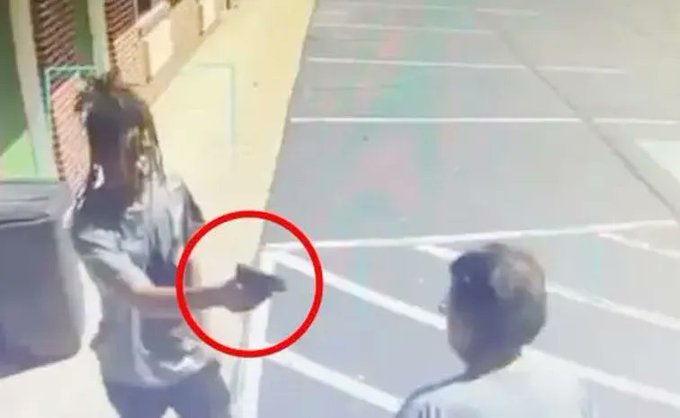The final words of 51-year-old motel manager Rakesh Ehagaban — “Are you alright, bud?” — now echo as a chilling symbol of vulnerability for a diaspora under siege. Ehagaban, an Indian-origin motel manager in Robinson Township, Pennsylvania, was shot point-blank in the head on October 3, 2025, after stepping out to defuse what appeared to be a routine parking-lot quarrel.
His alleged killer, 37-year-old Stanley Eugene West, a motel guest, had moments earlier shot a woman during a domestic dispute before turning his weapon on the unarmed manager.
Captured on security cameras, the killing was as senseless as it was brutal — a man’s impulse to help met with a bullet. The tragedy, however, is not an isolated aberration. It forms part of an alarming pattern of rising violence against Indians abroad, particularly in Western countries long considered aspirational destinations for students, professionals, and families.
A Pattern of Fear: The Diaspora Under Attack
According to India’s Ministry of External Affairs (MEA), there were 91 attacks on Indian students abroad in the past five years, leading to 30 deaths. The year 2023 alone saw 86 attacks, up sharply from 57 in 2022 and 29 in 2021. From 2021 to 2023, 28,458 Indians died abroad, with 136 linked directly to violence or murder.
In 2025, that trend has turned grimmer. The MEA’s mid-year data show over 100 attacks on Indians worldwide, including 15 fatalities, many in the United States, Canada, Ireland, and Australia. In each of these countries, a common narrative recurs — racial profiling, anti-immigrant sentiment, and online hate spiraling into physical violence.
Indians now form the largest group of international students in several Western nations, a visibility that has made them convenient scapegoats amid local economic anxiety and political nativism.
The American Chill: Gun Violence Meets Racial Anxiety
Ehagaban’s killing in Pittsburgh is the fourth fatal attack on an Indian-origin individual in the U.S. this year, following the October 4 shooting of a Hyderabad student at a Texas gas station. Each case underscores the deadly intersection of race and America’s gun crisis.
While police have not confirmed a racial motive in the Pittsburgh case, the broader pattern is undeniable. In February, 41-year-old Vivek Taneja died following an assault in Washington, D.C.; earlier, Syed Mazahir Ali of Hyderabad was chased and beaten in Chicago.
The Foundation for India and Indian Diaspora Studies (FIIDS) called Ehagaban’s death “a senseless tragedy emblematic of a larger crisis — a community caught between gun violence and racial hostility.”
The Indian Consulate in New York issued condolences and urged Indians in the U.S. to “remain vigilant,” while advocacy groups demanded stronger bilateral protocols for migrant safety.
Beyond the U.S.: A Global Rise in Hate
Elsewhere, the trend is equally disturbing. In Ireland, attacks against Indian nationals surged by 400 per cent in 2025, according to the Ireland India Council. In Dublin and Waterford, taxi drivers, students, and even children have been assaulted amid growing far-right agitation against migrants.
In Canada, where Indians comprise nearly 40 per cent of all international students, hate crimes against South Asians rose 143 per cent between 2019 and 2022, with 27 Indian fatalities since. The situation has worsened amid India-Canada diplomatic tensions over Khalistan-linked extremism, leading to temple vandalism, graffiti, and targeted assaults.
Australia has witnessed a return to scenes reminiscent of its 2009 “Indian student bashings.” The July 2025 stabbing of Charanpreet Singh in Adelaide after racial abuse reignited fears that the cycle of hate has not ended.
Even in countries like the UK and Germany, where anti-Indian attacks are fewer but rising, Hindu temples have been vandalized and students assaulted, suggesting a continental contagion of xenophobia.
The Digital Amplifier: From Tweets to Threats
Experts warn that this violence no longer occurs in isolation — it is amplified, normalized, and coordinated online.
A South Asian hate-monitoring report found a 1,350 per cent surge in anti-Indian posts in Canada between 2023 and 2025, often tied to disinformation campaigns around India’s foreign policy or domestic politics.
In the U.S., far-right forums like 4chan and social media platforms like X (formerly Twitter) have incubated organized campaigns mocking Indian immigrants, students, and tech workers. One such operation — dubbed “Operation Clog the Toilet” — targeted Indians with visa misinformation and harassment during recent H-1B crackdowns.
The online-to-offline pipeline is evident: spikes in hate posts have correlated with real-world assaults in multiple jurisdictions. Analysts attribute the rise partly to Elon Musk’s relaxed content moderation on X, which critics say has turned it into a megaphone for racial hate.
Economic Roots and Political Fault Lines
While racism forms the visible layer, economic anxieties run deeper. Indians dominate H-1B visas and comprise a growing share of global high-skill labor. In Western economies battling inflation, wage stagnation, and job cuts, this success sometimes fuels resentment.
In Ireland, migrants are blamed for housing shortages; in Canada, they are framed as “overcrowding” universities. In the U.S., proposals to hike H-1B visa fees to $100,000 have reignited anti-immigrant rhetoric, with trolls calling Indian workers “job thieves.”
Layered atop these tensions are geopolitical rifts — notably the India-Canada standoff over Khalistan activism. Pro-Khalistan groups in North America and Europe have stoked polarization, occasionally turning Indian communities into proxies for political hostility.
Government Responses: Words Without Security
India’s diplomatic missions have issued repeated advisories — the latest urging students and professionals to avoid isolated areas and stay in touch with consulates. The MEA has raised the issue with host nations, seeking better police coordination and anti-hate mechanisms.
Host governments have responded with sympathy, but little systemic change. Ireland’s President Michael D. Higgins condemned the “unacceptable attacks,” yet prosecutions remain scarce. Canada’s RCMP and the U.S. Department of Justice have promised hate-crime tracking improvements, but underreporting remains endemic.
Community groups are filling the gap. The Ireland India Council and FIIDS have held protests and safety workshops, while Indian-origin tech executives in Silicon Valley have funded diaspora legal aid programs.
The Human Cost and the Silent Exodus
For many Indian families, the lure of foreign opportunity now carries an undertone of dread. Inquiries for overseas education to “high-risk countries” have reportedly fallen 15 per cent in 2025, and remittance flows — exceeding $100 billion annually — face new uncertainty.
Ehagaban’s killing in Pittsburgh, like those before it, has left not just grief but a gnawing question: Can Indians feel safe anywhere anymore?
At his motel, a makeshift memorial grows — candles, flowers, and a small note reading, “He only asked if the man was okay.”
As diaspora groups demand accountability and governments trade platitudes, the image of Rakesh Ehagaban — a working man extending kindness in a moment of chaos — lingers as a haunting indictment of a world where decency itself has become dangerous.






